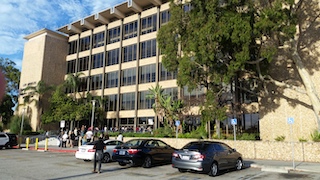You or a loved one may have been convicted of murder even though you or your loved one was not the actual killer. The conviction may have been premised on an aider or abettor theory, or on a “natural and probable consequences” theory based on an act that was encouraged or helped.
With then-Governor Jerry Brown’s signing of Senate Bill 1437 on September 30, 2018, significant changes were made to California’s felony murder theory that historically had extended liability to defendants who were not the actual killer, but who aided or abetted or encouraged and helped such that the “natural and probable consequences” of their conduct led to another person killing another, even if the defendant did not have the same intent as the actual killer. Such intent could be transferred “in reverse” back to defendant, resulting in his or her liability for murder. The is the essence of California’s old felony murder rule.
Senate Bill 1437 returned California law to the fundamental principal that a person should be punished only according to his or her own level of individual culpability. Penal Code § 189, as amended by SB 1437, now states that a participant in a felony in which a death results is liable for murder only if he or she is the direct, actual killer, or with the intent to kill aided and abetted the actual killer in the killing, or was a major participant in the felony and acted with reckless indifference to human life.
Under Penal Code § 1170.95, a person convicted of murder under the pre-1437 theory of murder but who would not have been convicted of murder under the post-1437 standard for murder may seek resentencing to have the murder conviction vacated.
 DMV
DMV
Such an eligible person must first file a Petition for Resentencing under Penal Code § 1170.95. The petition must present “a prima facie showing that he or she is entitled to the relief” of vacating the murder conviction. Penal Code § 1170.95(c).
This is done typically by showing that the jury verdict was based on a finding that someone else was the actual killer, but that the jury found defendant / petitioner was vicariously liable for murder based on being an aider and abettor to the actual killer or participated in some way that the natural and probable consequences of his or her act led to the murder. The trial transcript can show that the natural and probable consequence theory was argued by the prosecutor. The transcript and evidence may show, for example, that defendant did not know that the actual killer had a loaded gun with him, did not know who else would be involved in the crime and did not help drive the killer to or from the location where the killing took place.
If the petition establishes such a prima facie case for relief, then the judge “shall issue an order to show cause” for the prosecution to prove, beyond a reasonable doubt, that the petitioner is ineligible for resentencing. Penal Code § 1170.95(d)(3). Once the defendant / petitioner established the prima facie case, then the court’s order to show cause shifts the burden of proof to the prosecution to show petitioner / defendant is not entitled to the relief sought.
If defendant / petitioner does not establish a prima facie case, then the judge will not issue an order to show cause and the petition for resentencing can be summarily denied by the judge and no hearing would take place.
However, once an order to show cause is issue, a hearing is then set in court for the judge to decide if the People met their burden of proof that defendant / petitioner is not entitled to resentencing.
The defendant / petitioner can then submit a reply to the People’s opposition to the petition to help frame the issues for the judge to decide at the hearing.
The People’s opposition most likely would argue that the jury found defendant / petitioner had the intent to kill the victim when he or she aided and abetted the actual killer or that the jury found defendant / petitioner was a major participant in the felony and acted with reckless indifference to human life. The opposition may show that the prosecution argued the old felony murder theory, but that defendant’s / petitioner’s intent on involvement was much more than the unknowing, minor role that 1437 excludes now from murder liability.
The opposition may seek to show that the actual killer and defendant / petitioner had a shared plan or agreement to commit the felony and were aware that the victim likely would die. The opposition may show that defendant / petitioner provided the killer to weapon used to kill, or helped the actual killer evade capture by the police after the killing, knowing a killing took place. The opposition may also show, for example, that defendant / petitioner helped case the location prior to the killing. In other words, the opposition will seek to show the judge that a prima facie case is rebutted by such facts.
The defendant / petitioner will then have the opportunity to argue that the judge should not give such arguments much weight due to other facts or law that reestablish a prima facie case for relief and resentencing.
The judge will then, quite often, ask counsel certain questions to help in making the ruling for resentencing and based on the entirety of the petition, the opposition, the reply and the arguments presented at the hearing, either resentence defendant or deny the petition for resentencing.
For more information about Senate Bill 1437, please click on the following articles:
 DMV
DMV